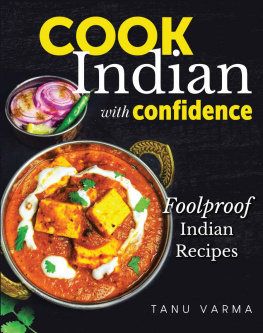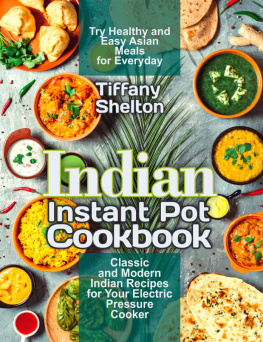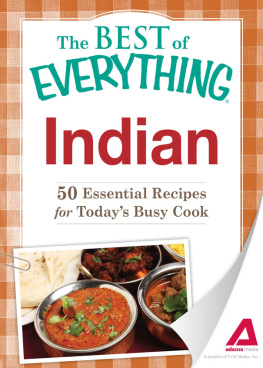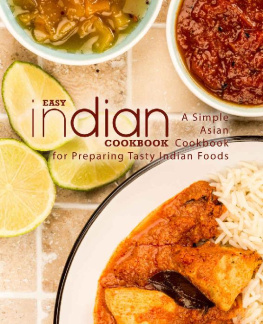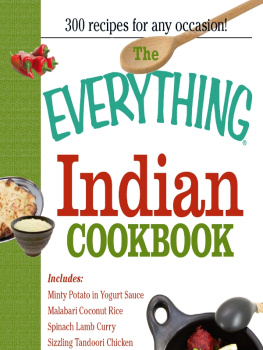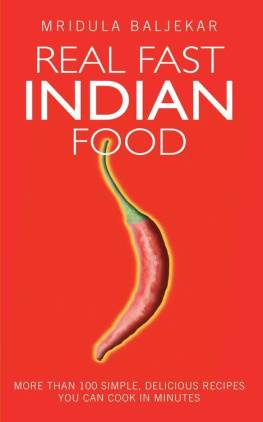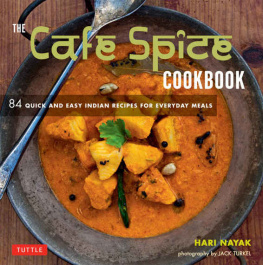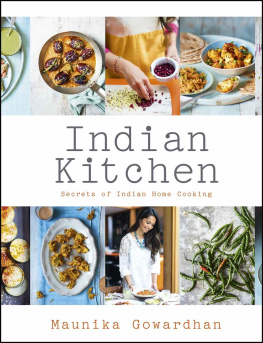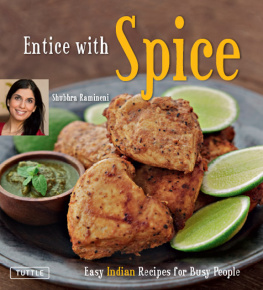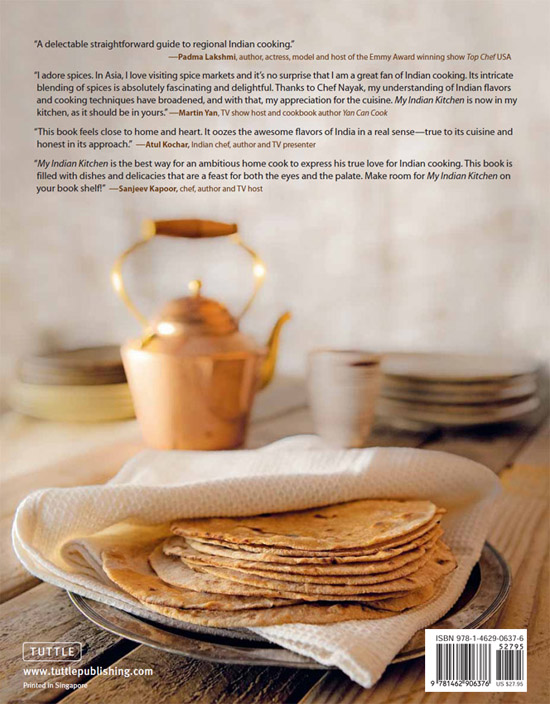I enjoyed the process of making My Indian Kitchen , and I could not and would not have finished it without the significant influence and inspiration of many people.
Thanks to my mom and dad, who gave me the gift of taste, my talent and passion for cooking and, most of all, the freedom to follow my passion for good food. And to my wonderful, loving family, who support and motivate me to pursue my dreams and realize my passion and love for cooking.
And to all the wonderful and talented people who helped put this cookbook together, including everyone at Tuttle Publishing, especially Holly Jennings, my editor, for her stellar advice and longstanding support, and Eric Oey, who guided me and the vision for this book. A big thank you to Jaden Hair, blogger and author of The Steamy Kitchen Cookbook , who connected me to Holly, which lead to making my vision a reality. Id like to thank Sambrita Basu, a dear friend and a gifted writer who was always there a phone call away to help me voice some of my thoughts into words that are in the book today.
The talented photographer Jack Turkel, who skillfully made my vision for the food and settings come alive in the photographs, and for making the food look luscious.
The teachers and mentors at the hotel management school in Manipal, India, and also at the Culinary Institute of America, for teaching me the discipline and fundamentals of cooking.
There are many more people, friends and mentors that I would like to thank, but cant possibly fit on this page. To them I offer big thanks for their continuous support and belief in me.
Chapter 1
Indian Spice Mixes
Indian cooking is all about spices and flavor. To the Indian cook, the two are one in the same: spice equals flavor. I learned this from my mother and grandmother, who often spent several of their afternoon hours preparing the spices to be used for our daily meals. And it is from them that I learned the benefit of grinding fresh spices and most importantly how the subtle flavors hidden within the spices are gently released when they are slightly roasted before being ground.
To understand Indian cooking is to understand how to use spices individually and in combination to enhance food. The specific mixture of spices in the food is referred to as a masala , which means a blend of spices or herbs. It is this unique combination of spices or herbs that creates the distinctive taste of each dish. This section includes recipes for masalas and other basic flavor components that form the building blocks of Indian cooking.

Masalas can be in the form of a powder or a paste. Different Indian recipes may call for a different blend of masalas in either form. Often a recipe will call for a just a sprinkling of mustard seeds and ground turmeric, whereas some recipes may call for a masala that is a blend of over twenty different spices. Do not be alarmed! I have not included such elaborate spice blends in this book. In fact, even a minimal use of spices will lend a wonderful, aromatic accent to a dish. So do not hesitate to use just a few spices to create your masalas. Sprinkle cumin seeds when you cook potatoes or add a stick of cinnamon while boiling rice. Even a single spice can bring out the flavor of a dish.
The proportion of ingredients in these spice blends, as well as the amount used in a recipe, can be adjusted to suit your taste. I urge you to be adventurous with the spice blends in this book. Begin by trying the different blends in this section. You will soon be able to identify the unique flavor each brings to a dish. Then experiment with tweaking the spice profiles to arrive at your own personal versions. The only guideline I would suggest is to maintain a balance between the hot flavors (like peppercorn and cloves) and the aromatic flavors (like cardamom, cinnamon and mace).
You can also substitute many of these masalas with store-bought, premade spice mixes. However, for the best flavor, I recommend using freshly blended spices. When making masalas at home, you are able to slightly roast the spices before grinding them into a powder or a paste, an extra step that helps to release the flavors and oils of spices into the blend, thus adding more potency (and magic!) to the spice mixture.
Indian Five Spice Mix Panch Phoran
This is the Indian equivalent of Chinese five spice powder. It is a popular blend used in Bengali cuisine. Panch phoron is a colorful blend of equal quantities of cumin seeds, mustard seeds, fenugreek seeds, fennel seeds and nigella seeds. There are two traditional versions of this spice mix: one whole and one ground. When used whole, the spices are added to hot oil before adding the vegetables, lentils or legumes. This method, known as tempering, is a very common technique in Indian cooking. When used in its ground form, this spice blend is added at the very end of the cooking process to flavor dishes. My favorite technique is to coarsely grind the blend and use it to crust fish fillets and chicken breasts. In the recipes in this book I call for using it in its ground form only. But I encourage you to try using the whole seeds. Nigella seeds can be found in Middle Eastern or Indian food stores as well as specialty food markets. They are also known as black onion seeds. If you dont have nigella seeds, substitute celery seeds.
Makes about 1 cup (125 g)
Prep time: 5 minutes
Cook time: 5 minutes
1 tablespoon cumin seeds
1 tablespoon black mustard seeds
1 tablespoon fenugreek seeds (methi seeds)
1 tablespoon fennel seeds
1 tablespoon nigella seeds or celery seeds
If you plan to use this spice mixture in its ground form, dry roast the whole spices over medium heat in a small, nonstick skillet, stirring often, until fragrant, 1 to 1 1/2 minutes.
Remove the spices from the skillet and set aside to cool completely.
Finely or coarsely grind the whole spices in an electric coffee grinder and store in an airtight jar. Note : Some recipes call for a coarsely ground blend. Remember to check the recipe youre planning to make to see if this is the case before grinding the spices.
TIPS FOR USING WHOLE PANCH PHORAN If you plan to use the spices whole, simply mix all of the spice together and store in an airtight jar. To use this spice mix in its whole-seed form, you might saut some of the whole spice mixture in ghee until fragrant and drizzle the mixture on food as a garnish to liven flavor. Alternatively, to make a simple Bengali vegetable dish, add 2 tablespoons of whole Panch Phoran to a tablespoon of hot oil and, when fragrant (about 25 to 30 seconds), add a teaspoon of minced fresh ginger, a pinch of ground turmeric and salt to taste along with a mix of diced, fresh seasonal vegetables (1 pound/ 500 g total). Saut the vegetables until tender and serve hot as a side dish.



